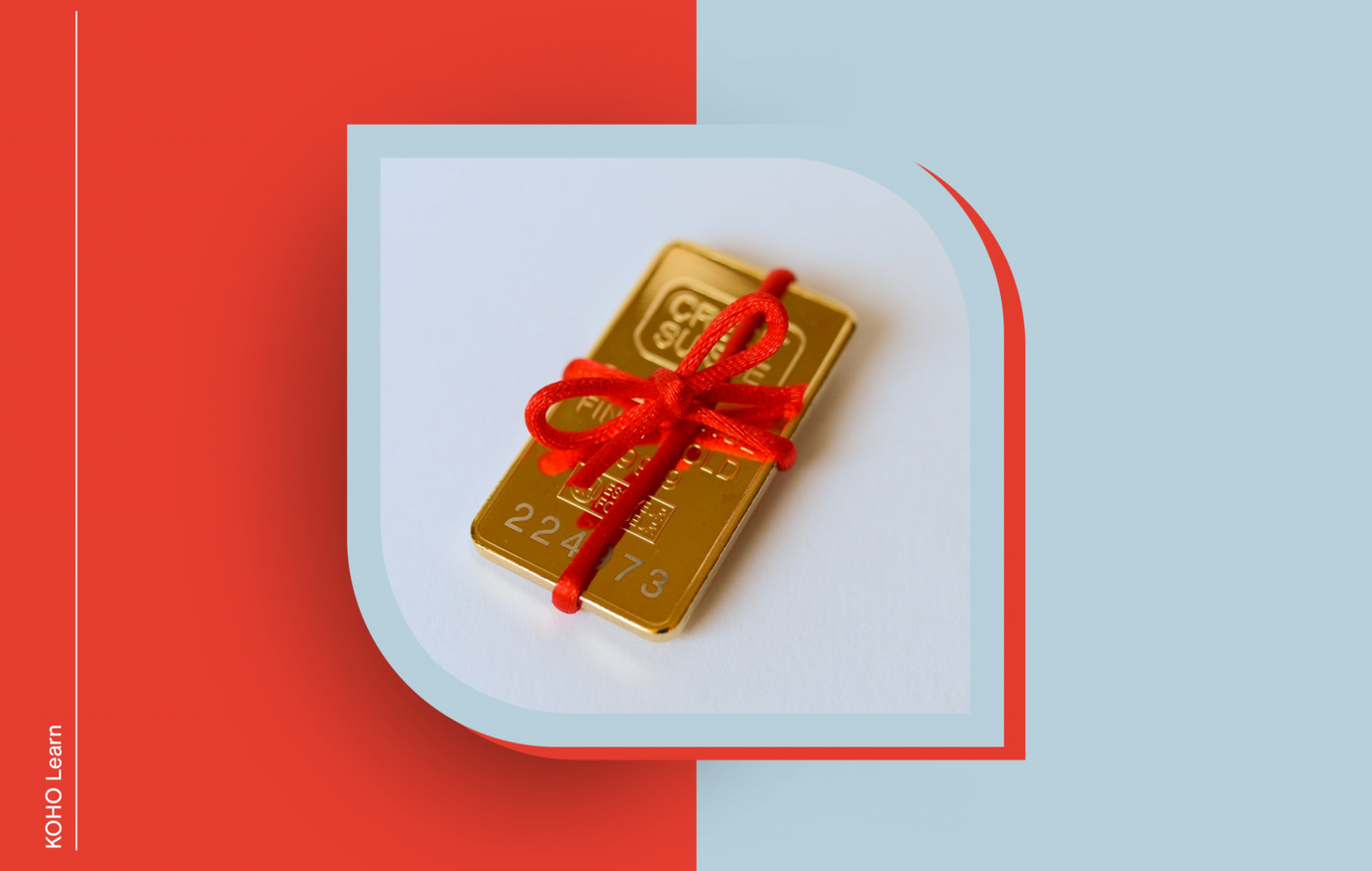Back
How to buy gold, silver, and other precious metals?
7 min read

Written By
Dan Bucherer
Rounding it up
Investing in precious metals can take many forms, from physical assets to futures derivatives.
Precious metals almost always make up a portion of a diversified portfolio because they tend to always be valuable.
You’ll still owe taxes on the profit you make from trading in commodities, such as silver and gold.
Mutual funds, mortgages, car loans, and Registered Retirement Savings Accounts (RRSPs)… there are plenty of financial products to know about and a whole world of ways that you can make your money work for you. But the stock market can be a fickle thing, so what you put in you have to be prepared to lose – even if you invest in the safest of stocks and bonds. Cars break, homes are tough to keep up with, and sometimes all you want is something that will, more than likely, always retain (or even gain!) value.
Gold, silver, and other precious metals share that adjective for a reason: the market has decided that they’re valuable. Did you know that you can invest in precious metals right from your desk? You can, and they can make up a very important part of your overall investing strategy. Read on to learn how you can buy gold, silver, and other precious metals; and, no, we don’t mean having a bunch of gold bars shipped to your door.
Why invest in precious metals?
It may seem complicated but investing in precious metals is fairly straightforward and, in fact, can be one of the best ways to protect your money. This is because they tend to be fairly stable in price. As a global society, we’ve decided that these materials are extremely valuable, in both manufacturing and luxury pieces. Since the beginning of time, human beings have sought out shiny things to wear as jewelry or to use as a material in manufactured goods and, because of this, precious metals will likely always have a high value. Now, we say “likely” because when you’re considering a substance that has a primary use as decoration (with some other uses sprinkled in), it can be difficult to say it will always be valuable, but precious metals have a pretty good track record.
SPEND SMARTER. SAVE FASTER
Let’s take gold for example. Like any other commodity—the fancy term for raw material such as gold, energy, corn, or wheat, for example—gold’s value has fluctuated over the past several decades. As supply increases, price decreases. So, for instance, when new mines open or people sell a lot of grandma’s old stuff, the price goes down. On the other hand, when folks decide to hoard their gold or buy more of it during troubling times, the price goes up. It’s a cycle.
The price of gold has, however, steadily increased in value as the years have gone by and, more importantly for investors, has stayed relatively stable. There hasn’t really ever been a drastic drop in the price of gold or other precious metals. This stability provides a solid anchor for your portfolio and is a key part of any diversified investment strategy.
What do Grandma’s wedding ring and semi-conductors have in common?
When we’re talking about investing in precious metals like gold and silver, we’re not necessarily talking about that box of jewelry your great aunt gave you for your 18th birthday. These family heirlooms are certainly worth something in real dollars, but what we’re talking about is investment-grade gold, silver, platinum, and palladium. The title of this subsection gave it away a bit, but these metals are used in more than just jewelry. From consumer electronics to auto parts, and from supercomputers to manufacturing, precious metals play a critical role in more ways than you know.
Gold, for example, is all around you. It’s in your phone, your computer, your car, and more. Anywhere there is a current of electricity, gold is there. It has the unique quality of being extremely malleable, meaning it can be molded into shape easily and still carry electricity. It helps form the smallest of components inside consumer electronics. Silver is used in batteries, superconductor applications, and microcircuits. Other metals like platinum rhodium and palladium don’t often fit the bill of “precious” but really should be considered as such. Their application is more in manufacturing but is incredibly valuable in the production of computers and vehicles as well.
Point is, precious metal is more than the watch grandpa left you. More importantly, the value of investing in precious metal is often in the market, not in hoarding jewelry in your basement.
How do I buy precious metals?
Great question. There are a few key ways that you can get your hands on precious metals like gold, silver, and others. From buying the actual stuff to futures, you can get involved in the precious metal market fairly easily.
Bullion and Coins
When we think about buying precious metals, we often think about the gold we’ve got hanging around in our house. Gold bars, watches, earrings, and coins are all physical ways that you can own gold. The problem, and perhaps you’re getting this, is that you have to physically handle these objects. You also can’t directly or easily trade them in for cash. This makes them very illiquid and in some ways, more susceptible to price fluctuations. If you do, however, want to buy some physical precious metal to have on hand, you can purchase it from a variety of different dealers and locations. You can also buy it, in the form of coins, directly through the Canadian Mint.
ETFs and Index Funds
Exchange-traded funds (ETF) and index funds are devices that are pegged to the price of precious metals and allow you to invest in them without actually buying the physical commodity. Gold is a good example of how this works. Generally, each share of an ETF pegged to gold is 1/10th of an ounce. If an ounce of gold is trading at $1,000, each share will be worth $100. You can buy and sell gold in this way just as you would a stock. Index funds are generally made up of a number of different stocks, bonds, and commodities. When you buy a share of an index fund, you’re buying a portion of an overall portfolio of different investments. Precious metals are often a portion of the makeup. Index funds are a solid investment choice for those who don’t necessarily want to mess around with a lot of buying and selling.
Certificates
Precious metals can also be purchased via a certificate. This is simply a piece of paper that says you own X number of ounces of gold, for example, and are entitled to it. Unfortunately, the paper itself isn’t really worth anything. You can sell a certificate, but it’s not as easy as owning an investment of the commodity in the market. It can also be difficult to sell, so it’s illiquid. So, if something happened and you really did need to use gold as a currency, the paper is worth nothing. For these reasons, certificates are not nearly as popular as they once were.
Futures
Futures are akin to gambling on the market. They are a derivative product, which means that you’re not investing in the product itself, but instead when you buy a future, you’re purchasing an obligation to buy or sell the product when it reaches a specific price or at a specific date. In practice, this allows you to “bet” on the direction a commodity will take in the marketplace. Futures are an advanced product, so you’ll have to seek them out to get involved.
What about the taxes on gold?
SPEND SMARTER. SAVE FASTER
Just like any other investment, you’ll be subject to capital gains tax when you sell an asset at a profit. The “good” thing here, however, is that generally, you won’t do a lot of buying and selling precious metals. Investors often hang onto them as a way of “holding” the value of a portfolio.
If you sell physical precious metals you may also be subject to taxes but the construction may be slightly different.
Should I buy precious metals?
Precious metals are a great way to invest in a commodity that will almost certainly hold its value. It forms the underpinning of many portfolios, both large and small, protecting them from market volatility. Precious metals are also valuable in their physical form as jewelry, coins, or bouillon. Make sure, however, that you have a firm understanding of your goals and know exactly how owning commodities like gold and silver can help you achieve them.

About the author
Dan is a runner and writer living in the Washington, D.C. area, where he currently works for a financial services trade association as the Communications Director.
Read more about this author